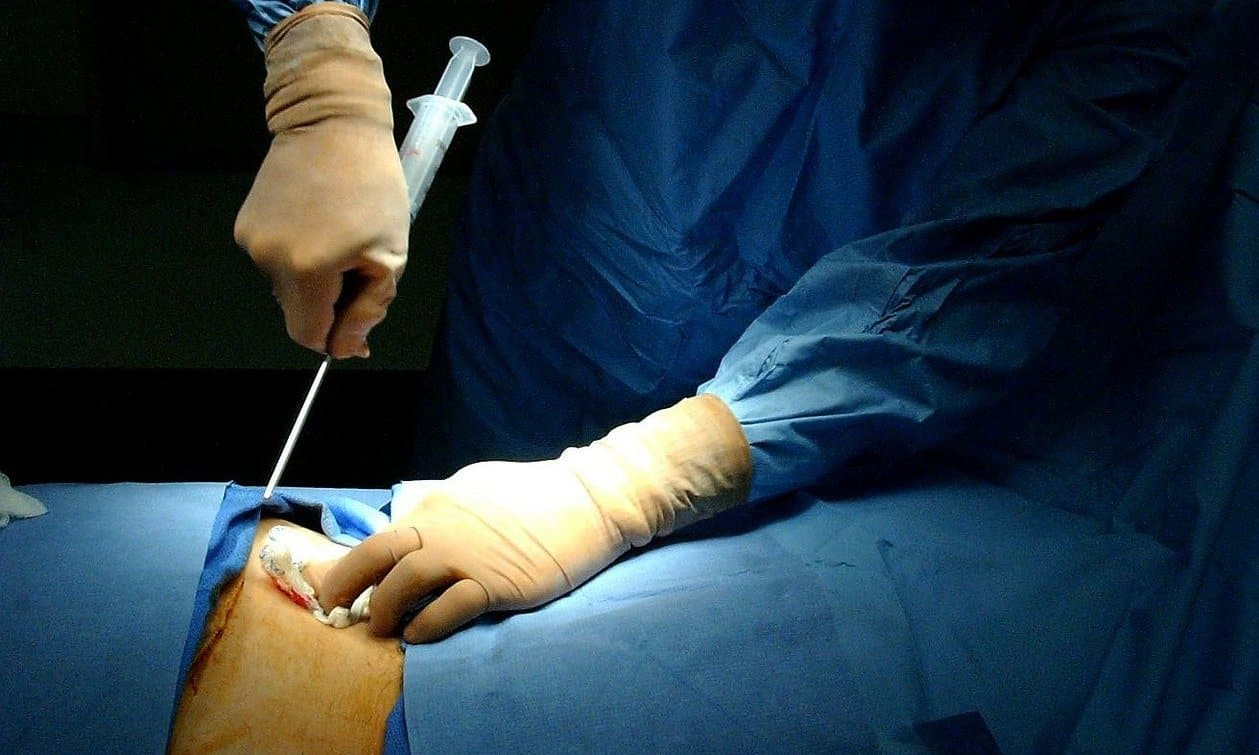The position of wide receiver has become one of the most popular ones to play. Young children see how happy receivers are when they catch a long pass for a touchdown. But they don’t know how much more it takes to be good at that position.
College football receivers who are good come in many different shapes and styles. Putting a number on them can be hard, but we will try. Here are the 15 best college football receivers in history.
We ranked them based on how well they did statistically. Their likelihood of breaking an NCAA record, and how good they were overall are considered. Some of the best wide receivers only played two or three seasons of FBS football. Others never played a single down at the highest level of college football.
Making this list was difficult, and you might not agree with some of the choices. But there aren’t any wrong answers when you’re as talented as these guys. Keep reading.
Table of contents
- What Skills do the Best WR in College Football History Need?
- Types of Best WR (Wide Receivers) in College Football History
- 15 Best WR (Wide Receivers) in College Football History
- #1. Torry Holt, WR- NC State
- #2. Trevor Insley, WR- Nevada
- #3. Troy Edwards, WR Louisiana Tech
- #4. Ryan Broyles, WR- Oklahoma
- #5. Peter Warrick, WR – Florida State
- #6. Justin Blackmon, WR- Oklahoma State
- #7. Braylon Edwards, WR- Michigan
- #8. Michael Crabtree, WR- Texas Tech
- #9. Larry Fitzgerald WR- Pittsburgh
- #10. Tim Brown, WR- Notre Dame
- #11. Desmond Howard, WR- Michigan
- #12. Corey Davis, WR- Western Michigan
- #13. Jerry Rice, WR- Mississippi Valley State
- #14. Calvin Johnson, WR- Georgia Tech
- #15. Randy Moss, WR- Marshall
- How To Improve And Become One Of The Best WR In College Football History.
- Frequently Asked Questions
- Conclusion
- References
- Recommendations
Read also: Best Football Prep Schools in the USA | 2023 Rankings
What Skills do the Best WR in College Football History Need?
Quickness
Release speed is important because if a WR can’t get off the line quickly, he’s probably going to be easy for a CB to cover. Receivers who can start their routes quickly and quickly change direction when the ball snaps stand out. The top wide receivers in college football history need quickness.
Great at taking routes and setting up defenders
CBS who covered Jerry Rice say that, until he got to his junction points, all of his routes looked the same. Rice was a master at setting up big plays for defenders before he moved to make a big play himself.
Guys who know how to run routes well usually have the most consistent success. WR recruits aren’t very good at this, but they can’t be sloppy when running routes. All of the top wide receivers in college football history are great at taking routes and setting up defenders.
To run routes smoothly, receivers need to know how to move their feet, where they are going, and be smart. Even before he graduated from high school, Robert Woods was a great route runner.
Others also read: The 50 Best College Football Coaches of All Time | 2023 Ranking
Separation Speed
Separation speed is the most important skill a WR needs to have besides good hands. They must be able to quickly get away from DBs coming out of their cuts and breaks. The top wide receivers in college football history have separation speed.
A WR doesn’t have great long speed but is quick to get out of the way. They will still have a lot of success. The main goal of the position is to get a WR open, which is what separation means.
Awareness of the field and the ability to read
Some receivers can get by without being good at this, but we think it’s a skill that’s important to have. Some offenses don’t have sight adjustments or option routes, so we don’t have to read coverages.
But the ones who are smart enough to know where they will be open. This is before the snap is the one that stands out. If a WR always runs deep posts into safeties or never stops in zone coverage holes, he doesn’t have this skill.
Sometimes you don’t have to go deep to make a good gain. You can just find a hole in the defense and catch the ball there.
Physical skill and control
Lynn Swann may have been the WR with the best pure body control ever. He was a great athlete who could glide and do amazing things to get in the right place to catch the football.
A recruit for the wide receiver must be a good athlete, or he will stand out like a sore thumb. Guys who are stiff and can’t quickly change directions, jump up for balls, or move with ease are not good. Hands, skills with the ball, a wide catch radius, and the ability to catch in a crowd.
Have you read: 15 Best High School Football Teams In Florida | 2023
The Catch Skill
If a WR can’t catch, do you know what we call them as evaluators? “Cornerbacks”. Seriously, if you can’t catch as a wide receiver recruit, you’ll quickly go into a defensive back in college.
Today, a lot of WR prospects catch up with their bodies. A recruit must be able to catch balls in the air by snatching, plucking, or grabbing them.
Words like “catch radius” and “strike zone” are often used. That means where a WR can catch the ball around his body. The strike zone of a WR is probably bigger the longer his arms are.
RAC skills
After the catch, RAC skills and instincts with the ball are a priority. “RAC” means “Run After Catch” in 7 OF 9 cases. This is where a WR can show that he’s not just a guy who likes to keep the ball.
It’s the ability to make a play, make defenders miss, and gain more yards running with the ball after a WR catches it.
Blocking
Not all wide receivers want to block, and many of them dread it. But players who want to be as good as possible in every way take this skill very seriously.
WR recruit shouldn’t be mauling and pancaking CBS on run plays. But when an RB is coming to his side, he must be able to stalk block, and stack up a defender to help out.
Others also read: 7 Best Football Scholarships in the USA
Types of Best WR (Wide Receivers) in College Football History
How a receiver gets labeled depends on how far away they are from the main offensive formation. It also depends on whether they start on or off the line of scrimmage. “Wide receiver” or “split end,” “flanker,” and “slotback” are the three main types
Split end (X or SE)
The receiver on a team’s side of the field is farthest from the center. He lines up on the line of scrimmage. This is by the rule that says seven players must line up on the line of scrimmage when the ball snaps. The split end of a punt formation is a “gunner.”
Flanker/Flanker back (Z, FL, or 6 back)
Often the team’s best receiver, the flanker lines up a yard or so behind the line of scrimmage. Usually on the same side of the formation as a tight end. It is usually the player on their side of the field who is farthest from the center.
They use the space between the start-off line and where a defender is to avoid “jamming” right away. As a member of the “backfield,” the flanker can move laterally or backward before the snap. This may change their role in the play or just confuse the defense. However, this is usually what they do.
Slotback or slot receiver (Y, SB, or SR)
A receiver who lines up horizontally between the offensive tackle and the split end. Or between the tight end and the flanker in the offensive backfield. A slotback can get off to a running start at the line in Canadian and arena football.
In American football, a slot receiver can move backward or to the side like a flanker. But not at the same time as any other backfield player. They are usually bigger players because they have to catch balls in the middle of the field.
In American football, slot receivers are usually used in flexion or other triple-option offenses. In Canadian football, three slot receivers are in almost all formations.
You should see: 15 Best Websites To Watch College Football Online Free
15 Best WR (Wide Receivers) in College Football History
#1. Torry Holt, WR- NC State
One of the best WR in college football history is Torry Holt. Torry Holt had a great NFL career with the St. Louis Rams. Anyone who saw him play at N.C. State knew the Rams and the Greatest Show on Turf got something special.
Holt was a great receiver for the Wolfpack. He had 191 catches for 3,379 yards and 31 touchdowns in his four-year career.
In 1998, Holt caught 88 passes for 1,604 yards and 11 touchdowns, which was an ACC record at the time. He got named ACC Offensive Player of the Year and finished eighth in the Heisman Trophy voting.
It was a step up from Holt’s junior year when he caught 62 passes for 1,099 yards and 16 touchdowns. Holt was a steady and consistent receiver with good hands and good speed. He is one of the best receivers in N.C. State’s history and one of the top wide receivers in college football history.
Others also read: Soccer Vs Football: Striking Differences and Similarities
#2. Trevor Insley, WR- Nevada
Trevor Insley didn’t do much in the NFL, but he was one of the best college receivers of all time. Trevor Insley never got as much attention as some of the other receivers on Nevada’s team. However, he had some impressive stats from 1996 to 1999. Insley’s senior year was amazing.
He caught 134 passes for 2,060 yards, which is still an NCAA single-season record, and scored 13 touchdowns.
Insley had six 200-yard receiving games and 26 100-yard receiving games throughout his career. He finished with 5,005 receiving yards, which is the second most in FBS history. His numbers are up there as one of the best WR in college football history.
Have you read: 15 Largest College Football Stadiums in USA | 2023
#3. Troy Edwards, WR Louisiana Tech
Troy Edwards had a season at Louisiana Tech in 1998 that people won’t forget soon. From 1996 to 1998, Troy Edwards did his job well at Louisiana Tech, but don’t tell Nebraska fans that. In the first game of the 1998 season, Edwards put on a show at Memorial Stadium that everyone will remember.
Nebraska beat Tech 56–27, but Edwards caught 21 passes for 405 yards and three touchdowns of 52, 80, and 94 yards, setting NCAA single-game records for receptions and yards. He is one of the best WR in college football history.
It was the beginning of an amazing season in which he caught 140 passes for 1,996 yards and 27 touchdowns. At the end of his time at La Tech, Edwards had 280 catches for 4,352 yards and 50 touchdowns. He got a Biletnikoff Award, which was a good thing.
#4. Ryan Broyles, WR- Oklahoma
Ryan Broyles was never the perfect size for a college receiver at 5’10” and 188 pounds. The Oklahoma receiver did nothing wrong. He tore his ACL and missed the last five games of his senior year. Broyles finished college as one of the NCAA’s all-time best pass catchers.
He finished his time with the Sooners as the NCAA’s all-time leader in receptions with 349. He still ranks third today, five years after leaving the Sooners. Broyles is also third all-time in receiving yards with 4,586 for his career.
He was a finalist for the Biletnikoff Award twice. His 2010 season was something special: There were 131 receptions, 1,622 yards, and 14 touchdowns. Ryan Broyles is one of the top wide receivers in college football history.
Read also: 15 Best Football Academies In The World | 2023
#5. Peter Warrick, WR – Florida State
Peter Warrick was a great receiver for Florida State who could do everything. He was one of the best WR in college football history. Peter Warrick tried his hand at a lot of different things. And he did it well.
From 1996 to 1999, Warrick did a great job in several roles for the Seminoles at Florida State. He caught 207 passes for 3,517 yards and 32 touchdowns. He also ran for 188 yards and scored four touchdowns. He returned kicks for 937 yards and two touchdowns and threw for two more scores.
He was also a big part of the Seminoles’ national championship season in 1999. He burned Virginia Tech for six catches, 163 yards, and three overall touchdowns in a 46–29 Sugar Bowl win.
#6. Justin Blackmon, WR- Oklahoma State
At Oklahoma State, Justin Blackmon did a lot of great things. He still ranks high as one of the best WR in college football history. Justin Blackmon’s NFL career got cut short by problems with alcohol. This was a shame because he showed a lot of talent in his three years at Oklahoma State.
He had 252 catches for 3,564 yards and 40 touchdowns in his three years at OSU. In his second year, he caught 111 passes for 1,782 yards and 20 touchdowns. In his third year, he caught 122 passes for 1,526 yards and 18 touchdowns.
Blackmon won two Biletnikoff Awards and came in fifth for the Heisman Trophy in 2010. He made the most of Oklahoma State’s wide-open offense.
Others also read: Top 10 Football Clubs in Nigeria | 2023
#7. Braylon Edwards, WR- Michigan
Braylon Edwards is one of the top wide receivers in college football history. As a Michigan receiver, Braylon Edwards always did his job well. And he always did a great job. After only making three catches as a freshman, he made 249 in the next three years. This gave him a total of 252 catches, 3,451 yards, and 39 touchdowns for his career.
Edwards had three seasons in a row with more than 1,000 yards. His best season was his senior year when he had 97 catches, 1,330 yards, and 15 touchdowns. He won the Biletnikoff Award for being the best receiver in college football because of this.
He is the only receiver in the history of the Big Ten to have three seasons with more than 1,000 yards. Edwards has become a legend at Michigan and one of the best college football receivers of all time.
#8. Michael Crabtree, WR- Texas Tech
The fast-paced plan at Texas Tech worked well with Michael Crabtree as a receiver. Texas Tech’s air raid offense lit up scoreboards and put up huge passing numbers when Mike Leach was the head coach. But Michael Crabtree did more with it than anyone else.
After his redshirt year in 2006, Crabtree only played for the Red Raiders for two seasons. He had stats that have been hard for people who play the NCAA Football video game series by EA Sports. Crabtree had 231 catches for 3,127 yards and 41 touchdowns when he left Tech.
As a redshirt freshman, he set NCAA single-season records for receptions, yards, and touchdowns with 134 catches, 1,962 yards, and 22 touchdowns. The next year, he did it again, catching 97 passes for 1,165 yards and 19 touchdowns. He won the Biletnikoff Award twice. He is one of the best WR in college football history.
#9. Larry Fitzgerald WR- Pittsburgh
Larry Fitzgerald’s time at Pitt was short, but he did well there. In that short time, he became one of the best WR in college football history. Larry Fitzgerald only played college football for two years but still made a big mark at Pitt.
The 6’3″, 215-pound receiver’s first season with the Panthers was a redshirt. In 2002 and 2003, he did very well in the Big East. In his sophomore season, Fitzgerald made 92 catches for 1,672 yards and 22 touchdowns.
He was the first Pitt player to have two seasons with 1,000 yards or more. His ability to make big plays, along with his height, speed, and overall athleticism, made him very hard to stop. College cornerbacks were probably happy that he left after just two seasons to play in the NFL.
Have you read: Complete Guide on How to Join a Football Club in England
#10. Tim Brown, WR- Notre Dame
Tim Brown is a legendary player for Notre Dame. He became one of the top wide receivers in college football history. The Heisman Trophy has been hard for receivers to catch. Tim Brown, a receiver for Notre Dame, can say with pride that he was the first true receiver to win the Heisman.
Before Brown had a career with the Oakland Raiders that put him in the NFL Hall of Fame, he coached some average Fighting Irish teams that were fun to watch. Brown finished his career with a Notre Dame record of 5,024 all-purpose yards and 12 receiving touchdowns. He caught 34 passes for 846 yards, ran for 144 yards, and returned kicks and punts for 857 yards.
Brown was a smooth and athletic player who knew how to make big plays. He played for four years, long before fast-paced spread offenses came along. His numbers would have been better if he hadn’t played for Notre Dame.
Have you read: 10 Best Football Clubs in South Africa, their Stadium and Sponsors
#11. Desmond Howard, WR- Michigan
As a Michigan receiver, Desmond Howard did a little bit of everything. The Heisman Trophy has only been to two receivers so far. Since 1991, no one has done that, which is a gap of 26 yards. That says a lot about Michigan’s Desmond Howard’s great season.
Howard had a great season in every way. He caught 62 passes for 985 yards and 19 touchdowns. He also ran for two touchdowns and 180 yards, and he scored on a kickoff return and a punt return. On kickoff returns, he averaged 27.5 yards.
Howard is one of the most versatile players in the history of college football. He has earned his place in the history of college football. In three seasons, he caught 134 passes for 2,146 yards and scored 37 touchdowns from all kinds of plays. This shows he is one of the best WR in college football history.
#12. Corey Davis, WR- Western Michigan
One of the best receivers in NCAA history is Corey Davis. P.J. Fleck “rowed the boat” from Western Michigan to Minnesota after WMU’s 14-1 season in 2016. This included a MAC title and a trip to the Cotton Bowl. Fleck should thank Bronco receiver Corey Davis very much.
Davis is one of the top wide receivers in college football history. He had 5,278 receiving yards at the end of his career, which was the most in FBS history. He had at least 1,400 receiving yards, 78 receptions, and 12 touchdowns in each of the last three seasons he played. Davis had 97 catches for 1,500 yards and 19 touchdowns in the fall.
Fleck told Jeff Seidel of the Detroit Free Press, “He doesn’t care about himself.” “I can’t believe this kid. He works as hard as any wide receiver I’ve ever seen, even harder than Vincent Jackson. His 331 receptions are the fourth most in FBS history. His 52 touchdowns are the second most in FBS history.
You should see The Pros and Cons of VAR in the Football Match decision.
#13. Jerry Rice, WR- Mississippi Valley State
Jerry Rice is one of the best players in the history of Division I-AA. He is one of the best WR in college football history. Jerry Rice shows that you don’t have to go to a big school to be a good player. In the early 1980s, the Mississippian got away from bigger schools in his home state. He ended up at a Division I-AA school Mississippi Valley State. He had a great career that got the attention of NFL scouts.
Rice caught 301 passes for 4,693 yards and 50 touchdowns throughout his career. As a junior and senior, he set I-AA single-season records. In 1983, he caught 102 passes for 1,450 yards. The next year, he beat those numbers with 112 catches for 1,845 yards and 27 touchdowns. This was an NCAA all-divisions record at the time. In two games that season, Rice scored five touchdowns.
The Delta Devils were not a very good opponent, but Rice is very good. He got picked by the San Francisco 49ers in the first round. He went on to become one of the best receivers in NFL history. In 2010, he got inducted into the Hall of Fame on the first ballot.
#14. Calvin Johnson, WR- Georgia Tech
At Georgia Tech, Calvin Johnson was a man among boys. Johnson is 6’5″ tall and weighs 235 pounds. He has an impressive body and can jump and move at a crazy fast rate. He had three great seasons with the Yellow Jackets, catching 178 passes for 2,927 yards and scoring 28 touchdowns. He is one of the top wide receivers in college football history.
In 2005 and 2006, he got named an All-American. Johnson won the ACC Player of the Year award and the Biletnikoff Award for being the best receiver in the game in 2006. On his way to the end zone, he made more than one of the other team’s defensive backs look like a mess. In college football, players with Megatron’s skills and products are hard to find.
Read also: Officials in a Football Game and their Roles
#15. Randy Moss, WR- Marshall
Randy Moss’s time at Marshall was short, but he made a big difference there. Randy Moss’s path to Marshall had some complications. Once he got to Huntington, West Virginia, he left an indelible mark on the Thundering Herd’s team. Moss had trouble with the rules at Notre Dame and Florida State. He went to Marshall and had to sit out his freshman year.
He only played FBS football for one season, but he will never get forgotten. Marshall was moving from Division I-AA to Division I-A when he got there, so in his first year, he played I-AA games. Moss was the best player in I-AA. He caught 78 passes for 1,709 yards and scored 28 touchdowns.
In 1997, The Herd moved up to the highest level of college football, and the 6’4″, 210-pound player was just as easy to find. Before he went to the NFL draft, he had 96 catches for 1,820 yards and 26 touchdowns. Moss had a short career at Marshall, but he scored 54 touchdowns as a receiver. He got to the end zone in every game he played.
Randy Moss is one of the best WR in college football history.
Others also read: 10 Best Streaming Channels for Football in 2023
How To Improve And Become One Of The Best WR In College Football History.
Here are some great things you can do this year to improve as a wide receiver and become the best player on your football team:
A lot of catch
Even though it seems obvious, a lot of players don’t work on catching footballs. If you can, play catch with your quarterback, but even playing catch with people who don’t play football can help you get better at coordination and catching.
Get some spray that makes football gloves stick
Wide receivers can make great catches like those made by ODB with the help of sticky football gloves. Even though every football receiver and tight end should have good gloves, grip spray can help even more. Get some sticky spray for your football gloves, and you’ll be making all kinds of amazing grabs on the field.
Read your script
No matter what level of football you play, you’ll have a big advantage if you know your plays and routes. When you have some free time, go through your playbook and make sure you know every play. You should also know every route, and be audible inside and out.
Lots of practice running routes
Once you know how all the plays in your playbook work, practice running your routes with your quarterback. By doing this, you’ll be able to get to know your quarterback better and feel more at ease during games.
Exercise a lot
No matter what position you play in a sport, you have to work out. Get in the gym and work out a lot if you want to break tackles, jump higher, and do better than ever before.
You should see: Quick Guide on How to Become a Ball Boy in a Football Club | 2023
Frequently Asked Questions
In the NFL, the player who lines up outside the offensive formation is a wide receiver. A wide receiver will sometimes line up next to an offensive tackle on the outside of the formation. Other times, they will line up on the edge of the offense.
The wide receiver’s main job is to catch passes from the quarterback that are going forward. On passing plays, the receiver tries to avoid, trick, or just run past the cornerbacks or safeties that usually guard him.
In football, a wide receiver is an offensive player whose job is to catch the ball thrown by the quarterback and sometimes run with it. The wide receivers line up outside the offensive line on the line of scrimmage. They try to get open for a pass by making breaks downfield through open lanes.
Conclusion
The wide receiver spot is one of the most popular ones in football. Since they are so important and because they are the ones who make the big players. Isn’t the NFL a big-play league? They are the ones everyone talks about.
College is a big place, but because of the spread offense. In all the other offenses that are mostly used now, a great wide receiver can get the ball in space.
Read also: Major Football Trophies and How much they worth in 2023
References
- bleacherreport.com– Top 16 Highest Paid College Receivers
- bleacherreport.com– The 50 greatest widest receivers of all time
- si.com– 10 Best Wide Receivers of all time
Recommendations
- Best Football Prep Schools in the USA | 2023 Rankings
- The 50 Best College Football Coaches of All Time | 2023 Ranking
- 15 Best High School Football Teams In Florida | 2023
- 7 Best Football Scholarships in the USA
- 15 Best Websites To Watch College Football Online Free
- 15 Largest College Football Stadiums in USA | 2023
- 15 Best Football Academies In The World | 2023
- Top 10 Football Clubs in Nigeria | 2023
- Complete Guide on How to Join a Football Club in England
- The Pros and Cons of VAR in the Football Match decision.
- Officials in a Football Game and their Roles
- 10 Best Streaming Channels for Football in 2023
- Quick Guide on How to Become a Ball Boy in a Football Club | 2023
DISCLOSURE: This post may contain affiliate links, meaning when you click the links and make a purchase, we receive a commission.






2 comments
Comments are closed.